The subtleties of caring for the "Black Opal" eggplant variety and its benefits
The Black Opal eggplant is grown in household plots and farm fields. It has an attractive presentation, juicy and rich taste. The pulp contains a large amount of vitamins A and B, which are necessary for a person to maintain immunity.
Let's consider in detail how to grow eggplants of this variety and what to do to get a rich harvest.
The content of the article
Description of the eggplant variety
Cold-resistant eggplant is suitable for growing in all climatic zones of the country... The vegetable tolerates frosts and sudden temperature changes, is resistant to crop diseases - pillar, root rot, tobacco mosaic virus. It is possible to cultivate Black Opal both in the open field and under film shelters. In protected conditions, the crop ripens earlier.
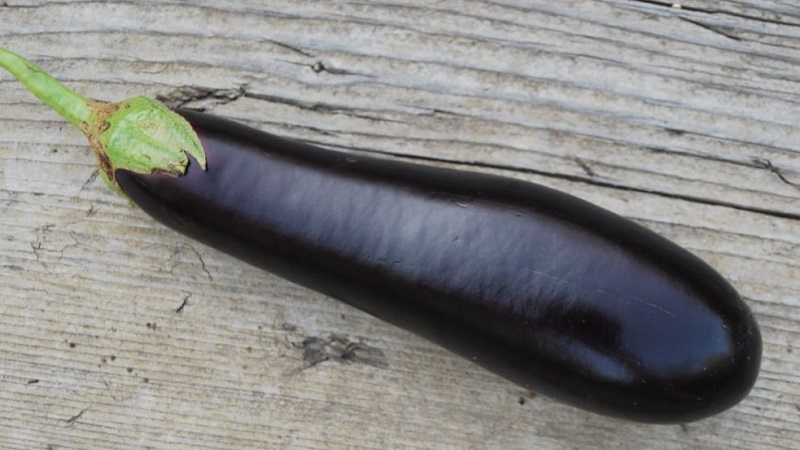
Distinctive features
Bushes are compact and spreading, require a garter to the support... The leafiness is medium, dark green. The variety is late-ripening, the harvest is harvested in 120-130 days. The vegetable is planted in seedlings.
Fruit characteristics and yield
Elongated, cylindrical fruits... The color is black and blue. Eggplant weight from 150 to 200 g, length - about 20 cm. The skin is dense, the surface is glossy. The pulp is light, the taste is neutral, there is no bitterness. From 1 sq. m gardeners collect about 4 kg of vegetables. In application, eggplant is universal, it is used for preparing first and second courses, winter preparations.
Interesting! Regular consumption of the vegetable lowers blood cholesterol levels and prevents liver and kidney diseases.
How to grow a variety yourself
When growing Black Opal follow the traditional rules of planting and care: planted in nutrient soil, watered regularly, loosened the beds.
Other varieties of eggplant:
Why is the Epic eggplant variety good
Growing seedlings
The soil for seedlings should be with neutral acidity, moisture-absorbing and loose... They improve the nutritional properties of the earth with the help of compost or ash - one part of these elements is added to the soil. Disinfected with manganese solution or freezing in a freezer. After that, superphosphate or urea is added to the ground - they saturate the soil and create favorable conditions for sowing seeds.
Before sowing, the eggplant seeds are disinfected: placed in a gauze bag and immersed in a solution of the drug "Fitosporin M" for 20 minutes. To improve germination, the material is treated with the "Athlete" growth stimulator. Seeds are planted in any convenient container.
Eggplants have a compact root system, therefore suitable for planting seedling boxes or cassettes with pallets... They are made of wood or plastic and are sold in any gardening store. It is easy to care for seedlings when they are all in one container. The main thing is to thoroughly rinse the container before planting and wipe it with a weak solution of manganese.
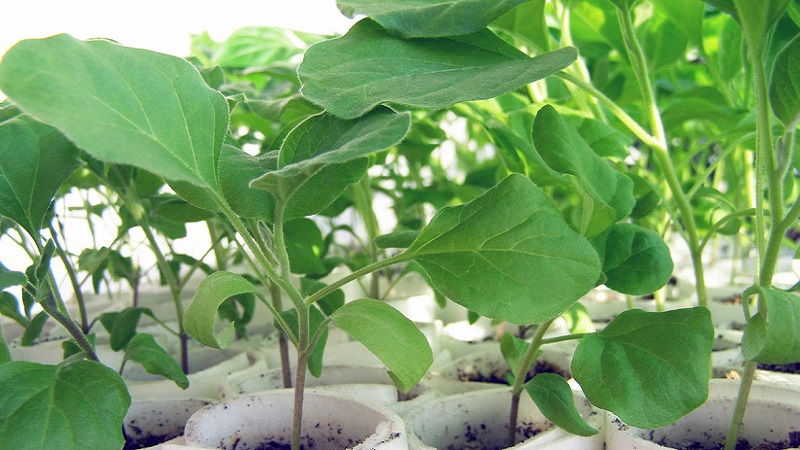
The soil is poured into the container and grooves are made 1-2 cm deep, 2 seeds are placed in each and sprinkled with a layer of earth. Watered with warm clean water and placed in a sunny and dry place.
Important! Water the seedlings once every 4-5 days. Two weeks after planting, fertilize with liquid organic fertilizer, another two weeks - with ammonium nitrate or potassium salt. Daylight hours should be at least 14 hours.
Transfer
The bed for Black Opal should be in a sunny and wind-protected place.... If the soil is weak, dug it up in the fall with the addition of straw cutting or wood ash. To increase the fertility of the soil, dry manure is introduced. Then leveled and watered. For eggplant, a bed 30 cm high and 1 m wide is suitable.
Ready seedlings are abundantly moistened a day before planting... In the beds, pits are made at a distance of 50 cm from each other with a depth of no more than 15 cm. Water is poured into the recesses, the seedlings are moved, sprinkled with earth. The soil is compacted around the root, sprinkled with a layer of mulch or peat chips.
Further care
Eggplant Black Opal require regular loosening of the beds... The procedure improves the quality of the soil, making it lighter and looser, more oxygen is supplied to the roots. They loosen the beds before watering.
Important! Moisten eggplants only with warm water. Water is directed to the root, avoiding contact with leaves and stems. It is recommended to water the plant in the morning or evening to prevent moisture from evaporating in the sun. One bush consumes 1–1.5 liters.
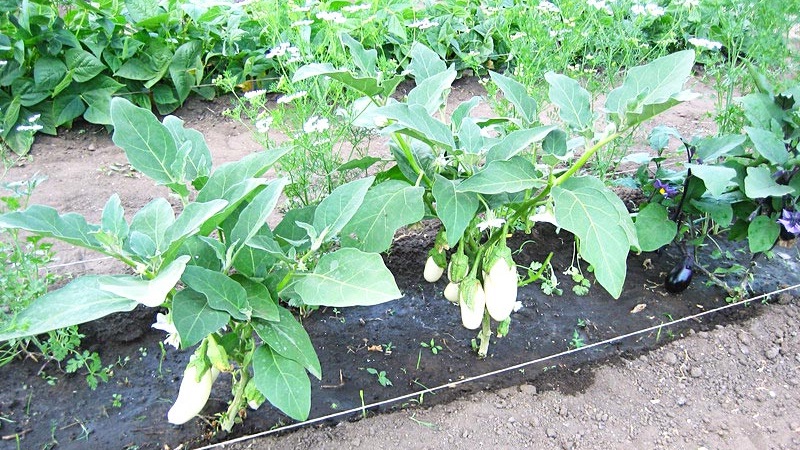
During cultivation, eggplant needs three additional feeding. Summer residents alternate mineral and organic fertilizers to maintain nutritional balance:
- The first feeding is organized 15 days after planting. Use ash, nettle infusion, manure or liquid droppings.
- The second is carried out after another 20 days. Mineral complexes are used - "Kemira", "Zdraven", double superphosphate, potassium salt.
- The third procedure occurs at the beginning of fruiting. Nitrogen-containing substances are introduced, since they improve the taste and quality of the fruit.
Read also:
The eggplant variety "Almaz", which is loved by summer residents
Features of cultivation and possible difficulties
For a rich harvest it is recommended to plant eggplant Opal after melons, carrots or greens... After potatoes and nightshades, these vegetables do not grow well. Failure to comply with the rules of crop rotation leads to the development of diseases.
Important! If the soil for planting is acidic, it is lime. A mixture of lime and dry wood ash is added to the ground. You can use chalk, limestone, dolomite flour.
It is important to monitor the plantings. It is recommended to remove excess ovaries and shoots, leaving 6-8 pieces on the plant... Shaping allows for more eggplants. If many large fruits have grown on one bush, they are tied to a support. This supports the stems, prevents them from breaking under the weight of vegetables.
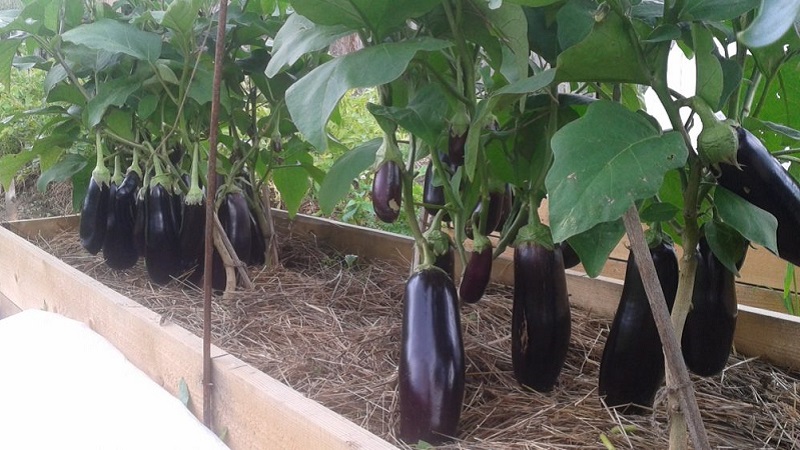
Diseases and pests characteristic of the variety
Black Opal is resistant to diseases and pests, however possible defeat by fungal or viral infections:
- Late blight - a fungal disease that actively develops in conditions of high humidity and heat. It appears as yellow and brown spots on the leaves and stem. Prevention of late blight is the observance of the rules of crop rotation and watering. Infected bushes are removed from the beds, healthy plants are sprayed with Bordeaux liquid.
- Gray rot appears during the period of rains, fogs and dew. The base of the stem is covered with a gray bloom, the plant becomes lethargic and weak. For prophylaxis, eggplants are sprayed with HOM and the beds are sprinkled with wood ash.
- Blackleg affects the roots. They become covered with a dark bloom, and the plants stop developing. The causes of the appearance of the leg are weeds and hard earth that does not allow air to pass through. To avoid disease, the seeds are disinfected before planting, during the cultivation process, the soil is regularly loosened and weeds are removed.
Colorado beetles are found among pests in the beds... Both adults and their larvae are dangerous for eggplants. Insects are able to live in the soil for up to three years, they easily tolerate cold and frost. The beetle feeds on leaves, which is why metabolic processes are disrupted in the plant. The pest is able to destroy the entire crop.A sure way to get rid of a bug is to collect it from the bushes into a bottle of kerosene. There are also chemical means of struggle - drugs "Typhoon" or "Tornado".
Harvesting and application of the crop
 Eggplant is harvested Black opal in technical maturity... During this period, the vegetable is not bitter, the pulp is dense and elastic. A glossy shine appears on the fruits, the peel acquires a black and blue tint. The eggplants are cut with a garden pruner along with the stalk. For long-term storage, even small fruits are selected without scratches and dents. You do not need to wash them, just wipe them with a dry cloth. Vegetables are packed in a plastic bag with holes and stored in a cool place. The optimum storage temperature is + 2 ° С.
Eggplant is harvested Black opal in technical maturity... During this period, the vegetable is not bitter, the pulp is dense and elastic. A glossy shine appears on the fruits, the peel acquires a black and blue tint. The eggplants are cut with a garden pruner along with the stalk. For long-term storage, even small fruits are selected without scratches and dents. You do not need to wash them, just wipe them with a dry cloth. Vegetables are packed in a plastic bag with holes and stored in a cool place. The optimum storage temperature is + 2 ° С.
Use eggplants to prepare winter preparations: caviar, salads and snacks. They blend harmoniously with herbs and spices, other vegetables and vinegar. The fresh harvest makes delicious dishes that are served on the table as an addition to side dishes and soups.
Advantages and disadvantages of the variety
Advantages of the Black Opal variety: high commercial quality, fleshy pulp, no bitterness. The variety is resistant to diseases of the crop, tolerates frost and rain. Black opal shows a stable yield and is easy to care for. The fruits are used in cooking, they make tasty and healthy winter preparations and vegetable salads.
However eggplant should not be overexposed in the gardenotherwise they will lose their taste, become bitter and hazardous to health. Gardeners closely monitor the sowing time and harvest at a specific time.
Reviews of gardeners
Black opal is grown by gardeners all over the country. Here are a few reviews.
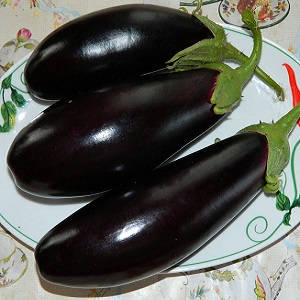 Dmitry, Volgograd: “Black opal is a great variety! I like its compact size and non-bitter flesh. I harvest at the end of August, make caviar and salads from it. I have been using the variety for 5 years already ".
Dmitry, Volgograd: “Black opal is a great variety! I like its compact size and non-bitter flesh. I harvest at the end of August, make caviar and salads from it. I have been using the variety for 5 years already ".
Olga, Ufa: “I planted Black Opal in a greenhouse. The first two weeks the bushes did not grow well, but then they quickly bloomed and the first eggplants appeared. It does not take much time to leave, which is a big plus. And the yield is excellent, 5-7 fruits ripen on one bush ".
Sergey, Novosibirsk: “I planted Black Opal by seedling method. I fertilized the beds, dug up before planting. Two weeks later I noticed a Colorado potato beetle. We managed to get rid of him. By the fall, I received beautiful shiny fruits. The harvest was enough to immediately eat and prepare for the winter ".
Conclusion
Eggplant Black Opal is suitable for growing both novice gardeners and experienced gardeners. The variety is rightfully recognized as tasty and unpretentious in care. The compact fruits ripen together and have a pleasant taste. When stored properly, they do not deteriorate for a long time.
The fruits are versatile in use, they are used to prepare stuffed and baked dishes, snacks and salads. Observing the simple rules of agricultural technology and harvest time, you will get vegetables with excellent taste and lack of bitterness.
Due to its resistance to temperature extremes, Black Opal is popular with gardeners throughout the country.